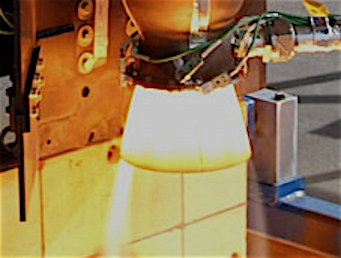The Ars Technica articles
- From zero to 100mph in 1.2 seconds, the SuperDraco thruster delivers
- Dragon was destroyed just before the firing of its SuperDraco thrusters
both include this "file photo" Tweeted by Elon Musk 2:27 PM - 18 Jun 2012:
Just fired our Superdraco escape rocket engine at full thrust! Needed to carry astronauts on Dragon
Why does the exhaust look so under-expanded? It looks like it doubles in diameter within a distance of only one diameter, and soon thereafter to a factor of 3 of it's exit diameter.
Doesn't that result in a substantial loss of thrust available to the spacecraft?
below: found in NASA Spaceflight Forum



